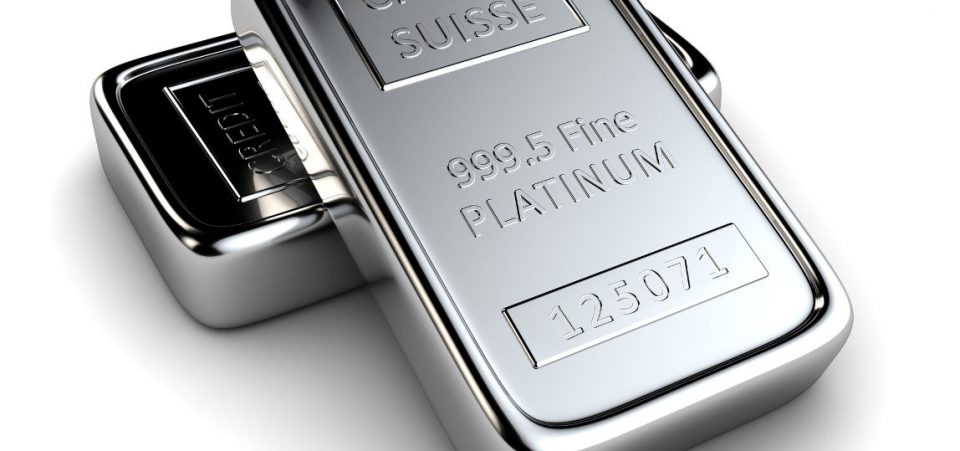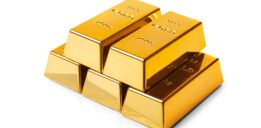Increased Demand and Decreased Supply
Precious metals like gold and silver have been the biggest attention-grabbers in 2016, but in 2017, they could both take a backseat to platinum. Thanks to increased demand, a serious decrease in supply (both mined and recycled), and uncertainty around Donald Trump’s economic action plan, platinum prices could easily soar more than 30% in 2017.
Precious metals like gold, silver, and platinum have sold off sharply since the election under the assumption that Donald Trump’s pro-growth strategy will rejuvenate lackluster U.S. economic growth. Platinum prices have fallen approximately seven percent to around $932.00 per ounce.
At the same time, the broader stock market indices are at record levels. The Dow Jones Industrial Average (DJIA), NASDAQ, NYSE, and Russell 2000 are all at record levels. While many see this as a sure sign they should exit the precious metals market, the fact is, little has changed economically in the United States.
The only thing that is different is the optimism on Wall Street, but that isn’t based on anything concrete. To reinvigorate the U.S. economy, Donald Trump is going to have to take a lot of drastic steps. Other than increasing our debt burden, no one really knows what that is going to look like. Nor do we know how the rest of the world will respond.
Platinum, the most overlooked precious metal, may be trading at its lowest levels since February, but the uncertainty about 2017, coupled with decreasing supply and increasing demand, might make it the best precious metal play for next year.
Platinum Prices May Soar on Supply and Demand Fundamentals
The underlying fundamentals for platinum remain strong, and will continue to do so in 2017. But there is a disconnect between the price of platinum and its fundamentals. That’s because 2017 will be the sixth year in a row that the platinum market has been in a deficit. And the demand for platinum is rising. (Source: “Platinum supply under extreme pressure — Dunn,” Mining Weekly, November 29, 2016.)
For starters, platinum production from South Africa, which is home to 80% of the world’s platinum supply, is declining. Platinum production from South African mines peaked in 2006 at 5.5 million ounces, and has been falling ever since.
South Africa platinum mines will barely be able to meet the four million ounces of primary supply needed in 2016. In 2017, it is expected that South Africa will fail to meet the four-million-ounce mark.
Further, platinum recycling is also in decline. As a result, the global supply of platinum will not be able to meet the growing demand. Analysts predict there will be close to a two-million-ounce shortage to meet the annual nine-million-ounce demand. This supply/demand imbalance could continue for the next 10 years.
Platinum as an Investment
Four core segments are responsible for the demand in platinum: automotive (37–42%), industrial (18%–24%), jewellery (31%–38%), and investment (2%–11%). For investors, platinum has never looked better. (Source: “About,” World Platinum Investment Council, last accessed December 5, 2016.)
As a general rule, investors have shunned platinum because it was extremely expensive compared to gold. That’s because platinum is roughly 15–20 times scarcer than gold. It’s also not easy to get. Miners need to extract approximately 10 tons of ore (usually a mile underground) to get one ounce of platinum. Moreover, the total extraction process takes six months.
And this has typically been reflected in the price. Since 1970, platinum has commanded a 30% premium over gold. Not so today. Platinum is at $932.00 per ounce, a 20% discount over gold, which is currently trading at $1,177.00 an ounce.
Not only is platinum trading at a serious discount to gold, it is also cheaper than the cost of production. In the current environment, this price level is entirely unsustainable.
This trend will eventually reverse and, when it does, investors may not have much time to react. In 2016, alone, platinum prices have soared $100.00 almost overnight on two occasions.
Why? Platinum prices are susceptible to global uncertainty and supply and demand spikes just like silver and gold are. But the recovery time for platinum is a lot longer. It’s easy to recycle platinum when prices rise. Getting funding to restart a mine is not quite so easy. Nor is it something that can be done overnight.
The same goes for new projects. Thanks to depressed platinum prices, producers have held back on reinvesting. You might be able to wildcat an oil well, but that doesn’t work with platinum mining.
Platinum prices may be trading at a big discount, but that won’t last for long. A lack of investment, increased demand, decreasing production, and six years of deficits means that platinum prices will not remain below the cost of production for very long.
South Africa-based Anglo American plc (ADR) (OTCMKTS:NGLOY) is the world’s biggest platinum mining company, accounting for roughly 40% of the world’s supply. Stillwater Mining Company (NYSE:SWC) is the only U.S. miner of platinum group metals (PGMs) and is the largest primary producer of PGMs outside of South Africa and the Russian Federation.
For more diversity, you may want to consider researching the ETFS Physical Platinum Shares ETF (NYSEARCA:PPLT) or E-TRACS USB Bloomberg Commodity Index Exchange (NYSEARCA:PTM).






